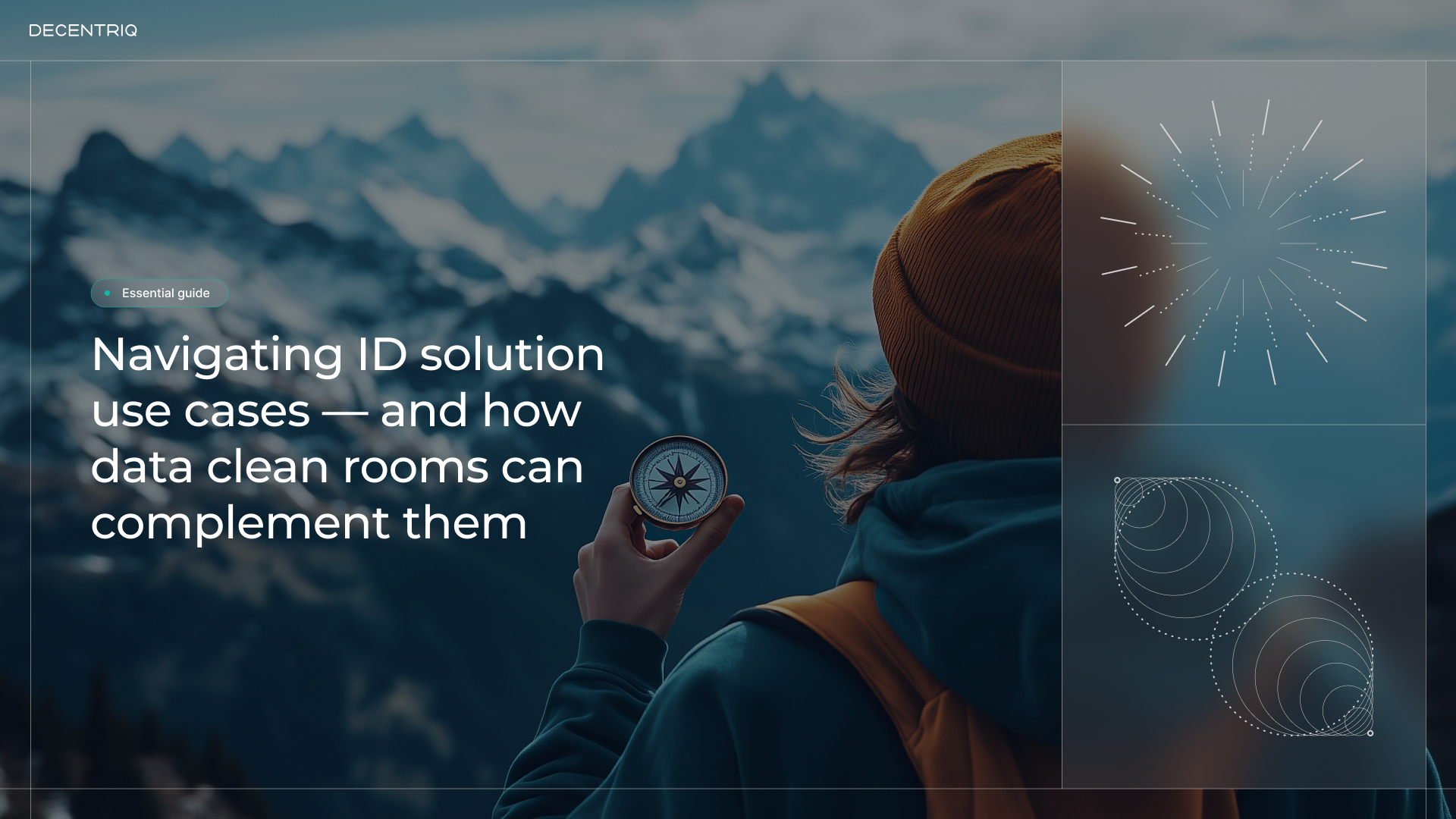Anonymization vs. pseudonymization: Why the difference matters when choosing a data clean room

How data clean rooms can enhance ID solutions
As third-party data declines, advertisers are turning to identity (ID) solutions to maintain audience targeting — or have already adopted them. It’s no surprise why: Major digital ad players back them, creating a strong ecosystem and seamless integration into existing workflows. However, ID solutions alone don’t fill all the gaps left by weak third-party data. Read our guide to learn what’s missing, how data clean rooms can help, and how to quickly implement an ID solution if you haven’t yet.

In the realm of data privacy, understanding the distinction between anonymization and pseudonymization is crucial, especially when evaluating data clean room solutions. This differentiation not only influences compliance with regulations like the General Data Protection Regulation (GDPR) but also impacts how organizations handle and collaborate on data.
In this article, we’ll break down the key differences between anonymization and pseudonymization, explain their relevance in data clean room environments, and highlight real-world applications — such as audience insights and lookalike modeling — where this distinction plays a critical role. We’ll also address common misconceptions in the cookieless advertising space and why privacy-washing can be misleading. Finally, we’ll discuss how confidential computing technology helps ensure compliance, setting a higher standard for privacy-preserving data collaboration.

Anonymization vs. pseudonymization: Key differences and GDPR implications
Anonymization involves processing personal data in such a way that it becomes impossible to identify individuals without disproportionate effort, even when combined with other datasets.. This process is irreversible, meaning the data is no longer considered personal data under GDPR (Recital 26) and is not subject to GDPR obligations.
Pseudonymization, on the other hand, replaces identifiable information with pseudonyms — such as codes or aliases — while still allowing re-identification if combined with additional information. Under GDPR (Article 4(5)), pseudonymized data is still considered personal data, meaning it remains subject to GDPR requirements, including having a legal basis for processing, protecting data subject rights, and implementing security measures to prevent unauthorized re-identification.
This legal distinction is critical for organizations using data clean rooms, as it dictates how data can be used and what safeguards must be in place. More about this in the next section.
Why this matters for data clean rooms
Data clean rooms are secure environments that let multiple parties collaborate on data-driven insights. Some — but not all — ensure that raw personal data is never exposed during the course of the collaboration. Within this framework, understanding the anonymization vs. pseudonymization distinction is essential.
A privacy-preserving data clean room (Such as Decentriq) operates through three key stages:
- Input data: Organizations input pseudonymized data into the clean room, allowing privacy-preserving analysis while maintaining the ability to link data across datasets.
- Processing and analysis: Pseudonymized data from multiple sources is combined and analyzed within the clean room under strict controls. Privacy-preserving clean rooms ensure that no raw data is exposed, and no party has access to the full dataset.
- Output data: Results such as audience insights, measurement reports, and lookalike audiences are anonymized before being extracted, ensuring no individuals can be identified by the other party.
Consider a brand and a publisher collaborating within a clean room. The brand wants insights into shared audience affinities, but neither party can expose their raw customer data. By analyzing pseudonymized datasets together, they uncover overlapping audience segments while ensuring personal data is never exposed. The same principle applies to lookalike audience modeling, where a brand can find potential new customers matching the characteristics of its existing ones — again, without ever identifying individuals. Similarly, campaign measurement within a clean room allows brands and publishers to analyze performance while ensuring that only anonymized, aggregated insights are extracted.
The risks of getting it wrong: Privacy-washing and compliance failures
With the decline of third-party cookies, many companies market their cookieless solutions as "anonymized," when in reality, they are merely pseudonymized. This privacy-washing can mislead organizations into believing they are GDPR-exempt when they are actually processing personal data.
Some advertising platforms, for example, claim their identifiers are anonymized, but if those identifiers can be linked back to individuals, they remain pseudonymous and subject to GDPR. Misclassifying data can lead to regulatory fines, reputational damage, and legal liabilities.
Ensuring data is truly anonymized before leaving a clean room is critical to avoiding compliance risks.
How Decentriq ensures privacy compliance with confidential computing
Unlike traditional clean rooms that rely on policy-based controls, Decentriq integrates confidential computing technology, providing a technical guarantee of data privacy. This means that data remains encrypted not just in transit and at rest, but also during processing, thereby eliminating risks associated with unauthorized access.
Decentriq’s clean room solution operates within trusted execution environments (TEEs), ensuring that no party — including Decentriq — can access raw data. This zero-trust architecture means businesses don’t have to rely on a central authority for privacy guarantees. Instead, they can be confident that data is protected by encryption throughout the entire process. Additionally, Decentriq can ensure that only anonymized aggregated insights leave the clean room when required by one of the collaborating parties.
By combining confidential computing with privacy-by-design principles, Decentriq ensures compliance with GDPR while enabling organizations to gain valuable insights from their data collaborations — without ever compromising security or privacy.
The bottom line
Understanding the distinction between anonymization and pseudonymization is not just an academic exercise: it has real legal, operational, and business implications when using data clean rooms. Organizations must ensure they correctly classify and handle their data to remain GDPR-compliant and protect consumer trust.
Decentriq’s clean room solution goes beyond traditional approaches by leveraging confidential computing to provide true privacy guarantees. By ensuring pseudonymized inputs, secure processing, and anonymized outputs, Decentriq enables businesses to collaborate on data insights without compromising compliance or security.
To learn more about how Decentriq can help you navigate GDPR-compliant data collaboration, get in touch with our team today.
References
How data clean rooms can enhance ID solutions
As third-party data declines, advertisers are turning to identity (ID) solutions to maintain audience targeting — or have already adopted them. It’s no surprise why: Major digital ad players back them, creating a strong ecosystem and seamless integration into existing workflows. However, ID solutions alone don’t fill all the gaps left by weak third-party data. Read our guide to learn what’s missing, how data clean rooms can help, and how to quickly implement an ID solution if you haven’t yet.

Related content
Subscribe to Decentriq
Stay connected with Decentriq. Receive email notifications about industry news and product updates.




.jpg)